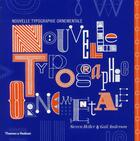-
Date de parution : 15/11/2022
-
Editeur :
Mit Press
-
EAN : 9780262544023
-
Série :
(-)
-
Support :
Papier
Résumé:
A meticulously created facsimile edition of a classic work on design by the progenitor of today's information design.
Long before the internet and its vast stores of information in digital form, information in analog form needed to be organized so that it was legible and accessible. One... Voir plus
A meticulously created facsimile edition of a classic work on design by the progenitor of today's information design.
Long before the internet and its vast stores of information in digital form, information in analog form needed to be organized so that it was legible and accessible. One designer who revolutionized the presentation of printed information was modernist pioneer Ladislav Sutnar (1897-1976). In 1950, Sutnar and architect K. Lonberg-Holm published Catalog Design Progress, a guide to modernizing the design of printed materials through typographic simplicity, compositional ingenuity, and navigational devices that signal the logical flow of information. This meticulously created facsimile of the original book illustrates and enacts Sutnar's ideas, making clear their continuing influence on graphic design.
In the book, Sutnar contrasts his design style with the conglomeration of text and pictures that characterized earlier printed material. He identifies and illustrates visual features, including typography, pictures and charts, and covers, and shows how the arrangement and organization of visual units allows information to flow smoothly. For this edition, the Ladislav Sutnar Faculty of Art and Design at the University of West Bohemia in Pilsen, Czech Republic, has carefully recreated the original, with redrawn figures, retouched photos, re-typeset texts, five-color printing, and spiral binding. A separate reader's guide by celebrated design historian Steven Heller accompanies the book. Both book and guide are packaged in a slipcase.
Donner votre avis









